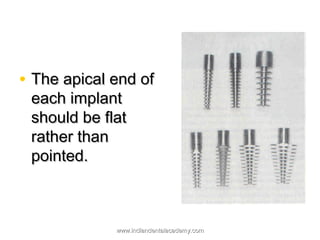The document provides an introduction to implantology, including key terminology such as dental implants and osseointegration, along with a historical overview of implant development from ancient to contemporary times. It highlights significant milestones in the evolution of dental implants and procedures, while discussing various implant types including endosteal, subperiosteal, and transosteal implants. The material outlines the progression of dental practices and innovations that have led to modern implant techniques.














































































































































